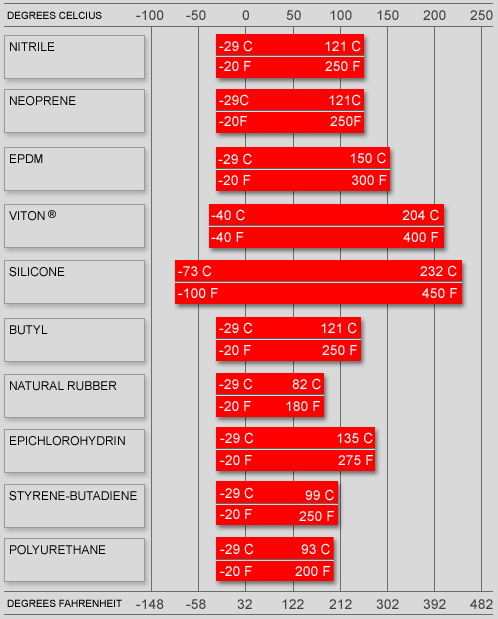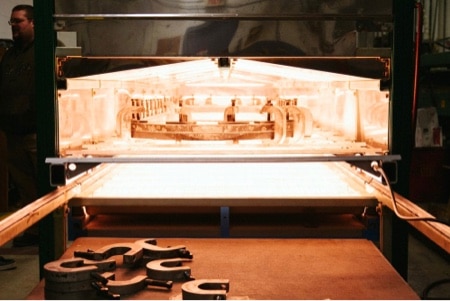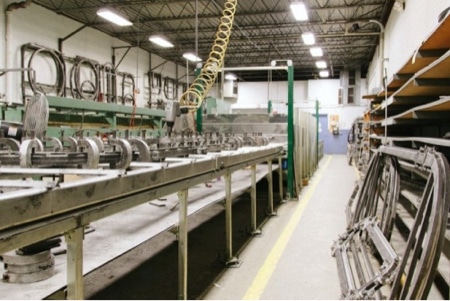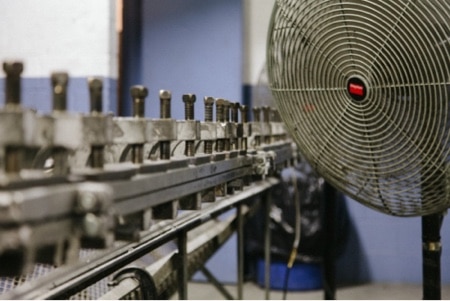
Temperature Range Charts
Partner with our engineers to determine which materials can withstand the temperatures involved with your unique seal application.
The temperature range for any compound is determined by the base elastomer used. This chart depicts the maximum temperature range for each elastomer. The temperature range for a specific compound may not reach these maximum limits. High temperatures may be considered if exposure is short term or intermittent.
Use the chart below to help you explain your rubber seal product application needs in our RFQ form.

The following summaries for each compound found on the chart can help you interpret the information and make more informed decisions regarding the specifications of your seal.
- Nitrile: With a temperature range spanning from -29°C to 121°C, Nitrile, also known as NBR (Nitrile Butadiene Rubber), demonstrates resilience in moderate to high-temperature environments, making it suitable for various industrial applications, especially where oil and fuel resistance are required.
- Neoprene: Neoprene’s temperature range mirrors that of Nitrile, spanning from -29°C to 121°C. Known for its exceptional resistance to weathering, ozone, and oil, professionals commonly use Neoprene in applications requiring durability and flexibility across a moderate temperature range.
- EPDM: Ethylene Propylene Diene Monomer, or EPDM, boasts a broader temperature range, from -29°C to 150°C. This versatility allows EPDM to excel in outdoor applications due to its excellent resistance to weathering, UV exposure, and ozone.
- Viton: With a wider range of -40°C to 204°C, Viton, a fluoroelastomer, showcases exceptional performance in extreme temperature conditions and aggressive chemical environments, making it a preferred choice in aerospace, automotive, and chemical processing industries.
- Silicone: Silicone rubber stands out with an impressive temperature range of -73°C to 232°C and its remarkable flexibility across both high and low temperatures, along with its resistance to UV radiation and aging, makes it ideal for diverse applications including medical, automotive, and aerospace industries.
- Butyl: Butyl rubber has a temperature range of -29°C to 121°C and its exceptional impermeability to gasses and excellent resistance to heat, aging, and weathering make it suitable for tire inner tubes, pharmaceutical closures, and various sealing applications.
- Natural Rubber, Epichlorohydrin, Styrene-Butadiene, and Polyurethane: These materials have temperature ranges similar to Nitrile, Neoprene, and Butyl, making them suitable for specific applications based on their unique properties such as flexibility, resistance to abrasion, or chemical compatibility.
Understanding the temperature limits of elastomers aids in selecting the most appropriate material for diverse operational conditions. At Seal Master, we offer expert guidance in choosing the right elastomer for your specific needs. Contact us to learn more or discuss your project.


